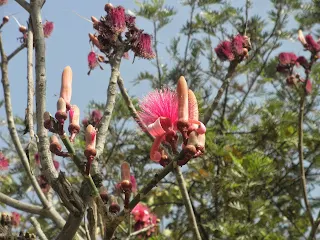Chicozapote
or Sapote Trees,
Cuyche (Maya)Manilkara zapota,
Sapotaceae Family, Sapote tree blooms from
February to
March, bearing light brown velvety fruits with soft
creamy texture pulp, highly aromatic and with a
delightful delicate flavor.
Mayas value this tree for its highly priced exotic
hardwood, delicious fruits, and exuberant foliage; the
tree grows wild or in man-made crops. Sapote fruit is
very aromatic and has a mild creamy texture light tan
pulp, tastes great!
"Protect Existing Forests and Plant New Ones on the Unused Lands and deforested Mountains. Regenerate and Fix the Soil. Reverse Desertification. Leave a greener planet to future generations.
Monday, May 25, 2015
Maya Bush Root Beer Plants or Mexican pepperleaf
Root
Beer Plants or Mexican pepperleaf (English),
Hoja Santa (Spanish),
X-mak-ulam
(Maya),
Piper auritum.
Native to Meso-America,
Hoja Santa is a shrub that grows wild in Yucatan, it is common in
many
Mayan village
huts as a healing aid and nutritious leaf to cook with.
Each leaf is shaped like an oval heart and some plants
have huge 20 cm long leafs that smell and taste a bit
like anise and nutmeg combined with a hint of
peppermint. Highly use at
Yaxkin Eco-Spa.
Wednesday, May 20, 2015
Shaving Brush Trees
By Liliana Usvat
Blog 323-365
Names
Amapola trees leafs have a join stem and alternate color from deep red wine when new to a deep green when mature;

Amapola leafs are shed prior flowering with amazingly beautiful and exotic flower that develop each spring from long cylindrical buds. Birds and bees love the sweet nectar of exotic Amapola flower trees.

Names
- Shaving Brush Trees (English),
- Chak Kuyché (Maya),
- Amapola (Spanish),
- Bombax ellipticum Bombacaceae Kapok Family.
- Native to Mexico and rare in other regions.
Amapola trees leafs have a join stem and alternate color from deep red wine when new to a deep green when mature;

Amapola leafs are shed prior flowering with amazingly beautiful and exotic flower that develop each spring from long cylindrical buds. Birds and bees love the sweet nectar of exotic Amapola flower trees.

Pseudobombax ellipticum, the
shaving brush tree, is a native of Mexico which loses it leaves and bears beautiful, large, single flowers
with hundreds of bright pink purple stamens in the
winter (December-March). There is also a white flowered form. Easily
propagated by stem cuttings.
The four-inch long bright magenta stamens are so profuse that the flower
really does look like a delicate, psychedelic shaving brush. The spiky
flowers grow from the tip of bare branches before leaves appear. But the
show is a quick one, and soon the base of the tree is littered with
what looks to be like pink troll-doll hair.
Large, bisexual flower heads appear all through the year, especially in
winter. The yellowish-green flowers that tend to become untidy as they
develop. The tree holds onto old flowers as they slowly disintegrate.
After about 1 year the seeds start being released into the wind.
Generally
it grows 20-40 ft (6 – 12 m). Sometimes it can grow up to 60 ft (18m).
Leaves are first bright red turning a fine green as they mature. It
blooms flowers in Spring. The Flowers are silky and two types colors.
Some trees bloom red flowers and some white flowers. They are looking so
beautiful when they are in full bloom. The wood is interesting as well,
showing stripping of greens, yellows, browns and white. For this reason
the people of Central America plant the tree in their garden and the
attractive flowers are used to decorate their homes and churches.
Propagation
The fruits are collected manually from the tree before opening and dried to extract the seeds. The small seeds are manually
separated from the fibers and stored under cool and dry conditions.
Pseudobombax ellipticum is propagated by seeds and cuttings. Seeds
require sunny locations for germination. The cuttings, 40 to 100 cm in
length and 2 to 5 cm in diameter, are easily rooted when planted in bags
of sand and watered daily or when planted directly in the field.
Subscribe to:
Posts (Atom)


